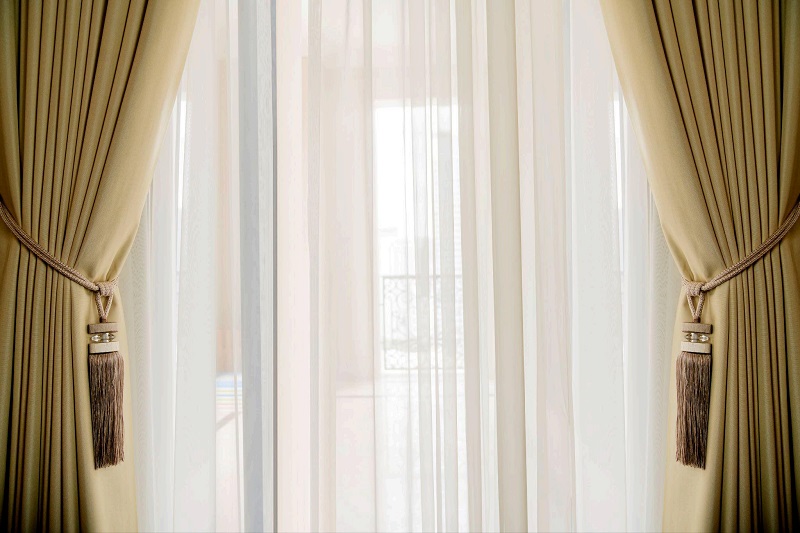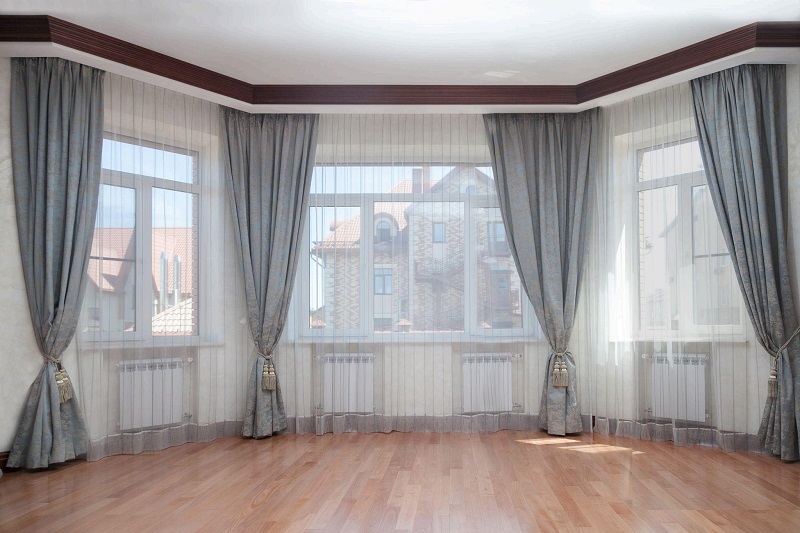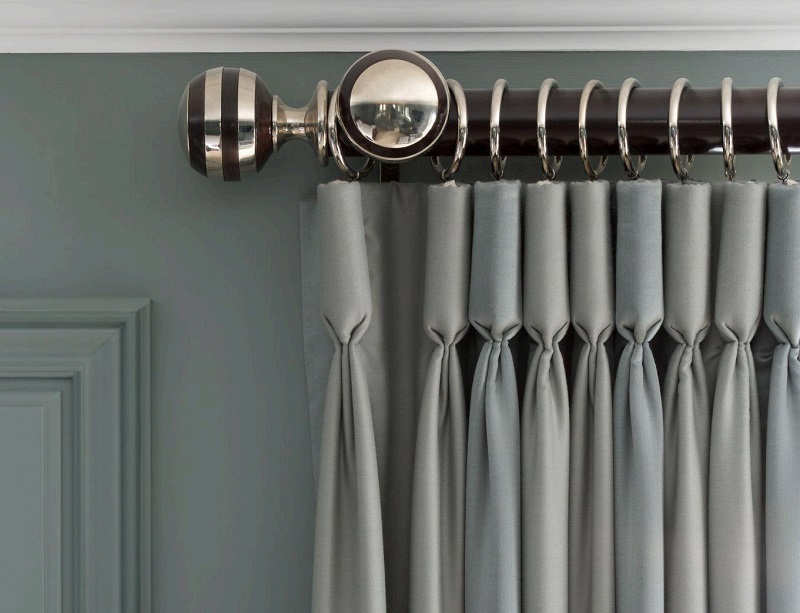Do you feel pressed to make decisions about which fabric, color, texture, and design to choose for your window treatments? Let’s us release that stress and share some of the basics you need to know about window treatments!
Where to Start: Functionality
The most common mistake many homeowners do is try to make a decision regarding their style considerations. This consumes too much valuable time and should be an afterthought. First comes function.
So, depending on the level of privacy you need, you can have wither lined curtains (for total darkness) or unlined, decorative ones that will allow some light filtering. The lining will increase the cost of your window treatment, but it will also protect your fabric, as well as your carpeting and furnishing nearby, from sun damage.
In short, it will help prolong the life of your curtains and drapes. That aside, you will also notice that the fabric falls more gracefully with lining.

To achieve the best in insulation and light blocking, opt for curtains with an interlining. This added layer not only improves the curtain’s functionality but also its longevity and aesthetic appeal. Note that such an option is usually absent in pre-made curtains but can be included in custom-made designs.
Selecting Texture, Color & Patterns
To choose texture, think of the room. Is your window treatment intended for a formal space or do you want a more casual feel? In the first case, velvet and silk are great (heavy) options, besides excellent insulators. They can only be dry-cleaned, though. Cotton sateen and silky rayon blends are often washable; hence are more practical.
Finally, for a more casual look, crushed velvet and billowy linen are more appropriate. Want something neutral that can work with all décor styles just as well and bring a neat and crisp feel? Cotton and wool blends, as well as cotton and wool, of course, are perfect.
When it comes to patterns, balance is key. If your room features patterned bedding or furniture, opt for solid curtains to avoid visual clutter. Conversely, pattern-free spaces can benefit from patterned curtains, adding interest. Classics like paisley or dots offer subtle style, while daring choices like large graphic prints can make a bold statement.
The Right Length

Curtains usually reach the floor, except when blocked by something like a radiator. You have two choices: end just above the floor for frequent use and a neat appearance, or slightly puddle on the floor for a touch of luxury, suitable for rooms with uneven floors. However, longer curtains require extra upkeep, including adjustments post-vacuuming. It depends on whether you are framing a window or hanging curtains for functional purposes, too.
The Right Width
Generally, the width of the panels should be twice the width of the window. That’s because you need your curtains to look drapey when shut. If you don’t want to close them, the width should be 1-1 ½ times the width of the window.
Where to Hang the Curtain Brackets
To allow the fabric to fall nicely, the curtain brackets should be hung above and outside the molding. The only exception is when you want to let elaborate window frames show. In this case, the curtains look best if hung within the frame.
Related Article: Drapery curtain rod ideas
Right Type of Rod

The curtain rod you choose should be relevant to the style of the room. Some of the most common options include the classic rod, return rod, track rod, and tension rod. More on Installation and Types of Curtain Rods here!
Which Heading?
Your curtain’s hem style sets the tone for your space—whether you’re going for a formal elegance or a casual ease, and it also affects practicality, like ease of movement.
For a traditional touch, go for a flat top with rings, or choose a rod-pocket top for a more informal feel. Pleated headings add a touch of sophistication, while tab-tops offer a flexible look that can swing between polished and relaxed.
How about Tiebacks?
Do you want to pull your curtains to the side and let natural light shower the room or do you prefer a more formal look? Either way, tiebacks will help you get there fast! All you have to do is mount a rosette (peg or metal bracket) on the wall.
To have the perfect result, make sure it’s mounted about one-third of the way up the floor (or 2/3 down the window!). The rod can also be matched with the style of the rest of the room. In the market right now, you can find anything from simple fabric tiebacks to fancy tassels to help you create a look that matches your tastes.